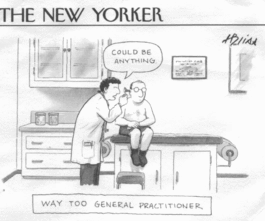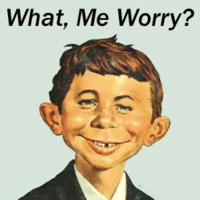1996 – Physicians in the US treat pain conservatively. Their practice pattern is shaped by many forces, including concerns about patient safety, chemical dependence, and diversion of prescribed opiates. Pain in many patients is undertreated.
1999 – The Veteran’s Health Administration announces an initiative that characterizes pain as the 5th vital sign. Highly touted, it accomplishes nothing, at least not in the first 5 years (1).
2000-2001 – The JCAHO, perhaps following the VA’s lead, announces its own initiative, also endorsing pain as the 5th vital sign. Pain is subsequently conquered, victory is declared, and everyone lives happily ever after. Okay, maybe not.
As you might expect, progress was far easier to advocate than effect. Once again, to practitioners, the supporting documentation reads more like a poorly written horror novel than useful guidance (2) 
(Click on Image to Enlarge) This is a graphic from an educational tool (2)…. I have so many problems with it that I don’t know
where to begin.
1. Everyone was taught about pain and how to manage it as a student and resident. Everyone. Some learned more than others, but the importance of managing pain was recognized well before the JCAHO and VA discovered it.
2. CME for pain was proportional to how much you encountered: surgeons and oncologists talked a lot more about it than dermatologists and radiologists.
3. Dependence, respiratory depression, and side effects are all real concerns…as is concern about regulatory scrutiny.
4. I will admit to limited availability of role models and access to pain docs in some settings. Both were legit then, and are now.
5. Patients are indeed the experts about their pain. But patients are humans, and that spans the spectrum of personalities and psychiatric disease. Crazy people get sick and have pain too. Managing pain in patients with psychiatric disease requires a deep understanding, that is to say understanding that is more than one powerpoint slide deep. If you understand the prevalence of psychiatric disease, and its higher prevalence among the chronically ill, you understand that this is not a minor consideration (but does manage to show up no where on their map of the world). There are other problems with this whole self-reporting thing, as we will explore briefly below.
There has been little effort to measure the success of the JACHO initiative, but there is evidence of its aftermath. Sales of opiate based analgesics have increased dramatically (approx 100%)(3). It is certain then, that physicians have become more liberal in their use of opiates to treat pain. Of course, the increased problems with chemical dependence, feared by reactionaries but not by the champions of these policies, have come about exactly as predicted (4), (5), (6)). Even the bizarre predictions became true: that there would evolve a group of ‘professional’ patients who would visit multiple pain clinics, self-reporting chronic pain, garnering multiple prescriptions, and reselling their drugs on the street. Opiates are dangerous to abuse, and those who care to can easily measure the body count associated with the new era of pain control (4). Once again, it’s not small…. and it’s far more the direct product of these campaigns than their architects are willing to admit *. To be fair, it is certain that human nature, human biology, and human avarice are the most important drivers of this problem; these initiatives simply made it worse. Dare I say that while no one ever died of pain, lots of people have died (in the past few years) from its treatment? Or at least in part as a consequence of these initiatives?
 Mitch Keamy is an anesthesiologist in Las Vegas Nevada
Mitch Keamy is an anesthesiologist in Las Vegas Nevada
 Andy Kofke is a Professor of Neuro-anesthesiology and Critical Care at the University of Pennslvania
Andy Kofke is a Professor of Neuro-anesthesiology and Critical Care at the University of Pennslvania
 Mike O'Connor is Professor of Anesthesiology and Critical Care at the University of Chicago
Mike O'Connor is Professor of Anesthesiology and Critical Care at the University of Chicago
 Rob Dean is a cardiac anesthesiologist in Grand Rapids Michigan, with extensive experience in O.R. administration.
Rob Dean is a cardiac anesthesiologist in Grand Rapids Michigan, with extensive experience in O.R. administration.


